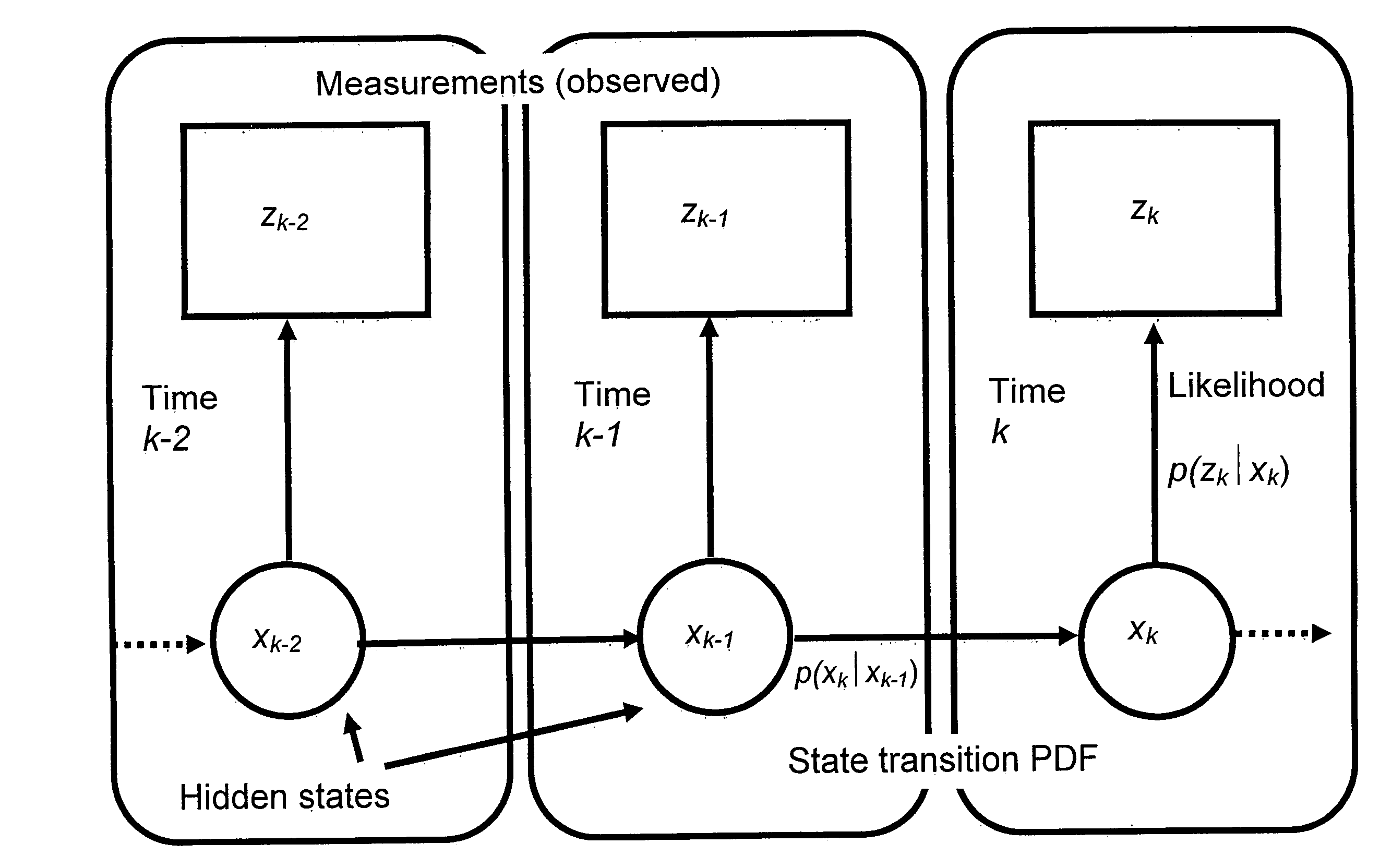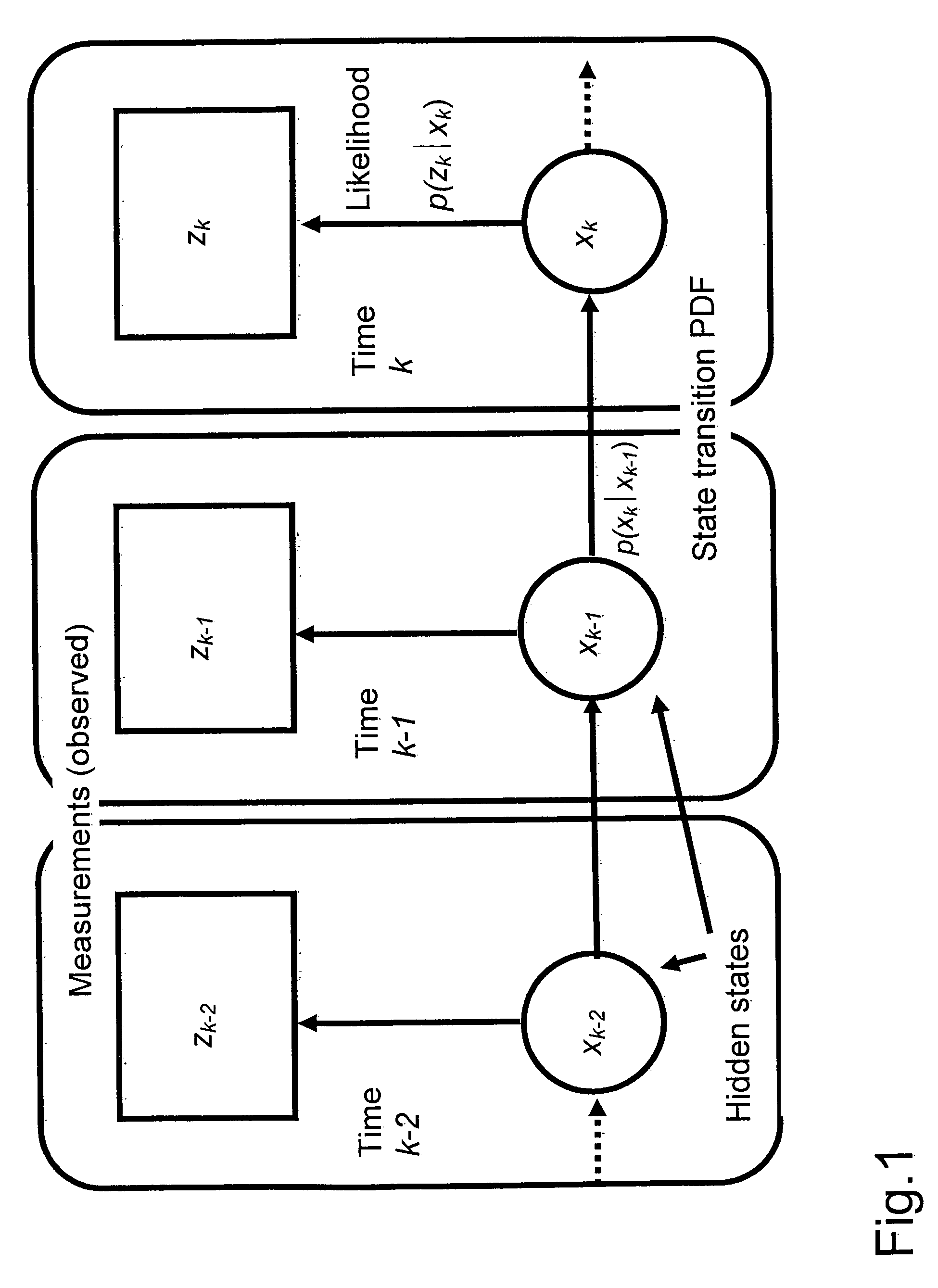Method for estimating hidden channel parameters of a received GNNS navigation signal
a navigation signal and parameter estimation technology, applied in the field of method for estimating hidden channel parameters, can solve the problems of significant source of errors within the gnss system, inability to immediately implement, and presume constant parameters, etc., to achieve significant increase in reliability of such receivers and reduce complexity.
- Summary
- Abstract
- Description
- Claims
- Application Information
AI Technical Summary
Benefits of technology
Problems solved by technology
Method used
Image
Examples
Embodiment Construction
with reference to the accompanying drawings. In the Figures:
[0028]FIG. 1 is a block diagram of the hidden Markov estimation process for three times, the channel measurements being represented by the sequence zi, i=1, . . . , k, and the channel parameters are xi, i=1, . . . ,k,
[0029]FIG. 2 is another block diagram of the recursive Bayesian estimation filter,
[0030]FIG. 3 an illustration of the Markov process selected in the following description for modelling a channel with Nm paths, the dotted arrows illustrated only in a small partial set of the transitions indicating the secondary condition Δτi,k≧0,
[0031]FIG. 4 is a block diagram of an embodiment of an integration of the method of the invention into a conventional GNSS navigation receiver,
[0032]FIG. 5 is a diagram illustrating the simulation result for a multipath situation considered, the pseudo ranges (=propagation time multiplied by speed of light) [m] being represented as a function of time [s] in the direct path (line of sight...
PUM
 Login to View More
Login to View More Abstract
Description
Claims
Application Information
 Login to View More
Login to View More - R&D
- Intellectual Property
- Life Sciences
- Materials
- Tech Scout
- Unparalleled Data Quality
- Higher Quality Content
- 60% Fewer Hallucinations
Browse by: Latest US Patents, China's latest patents, Technical Efficacy Thesaurus, Application Domain, Technology Topic, Popular Technical Reports.
© 2025 PatSnap. All rights reserved.Legal|Privacy policy|Modern Slavery Act Transparency Statement|Sitemap|About US| Contact US: help@patsnap.com



